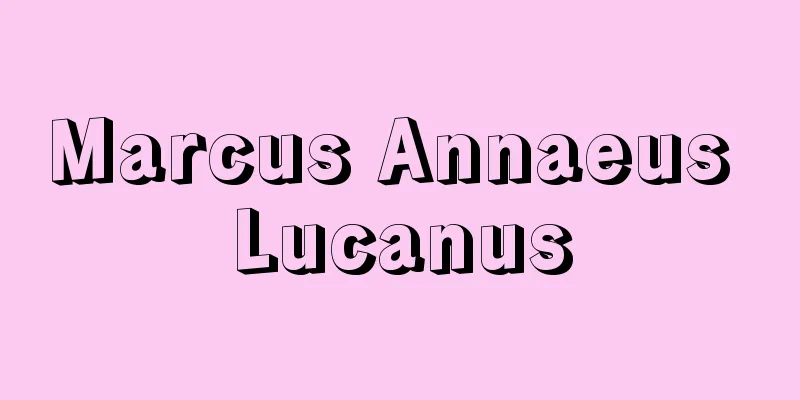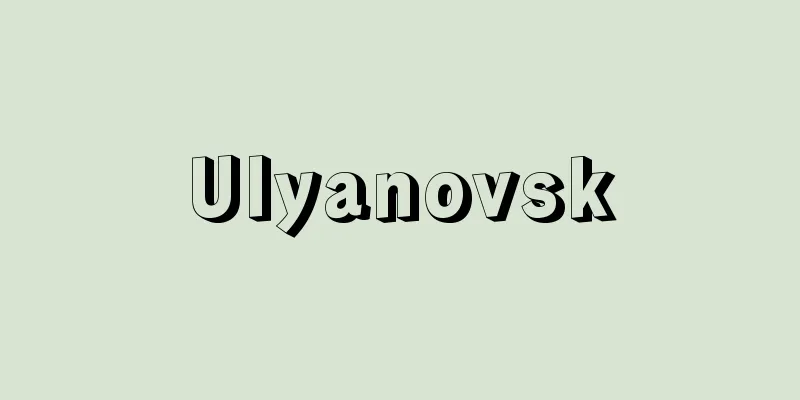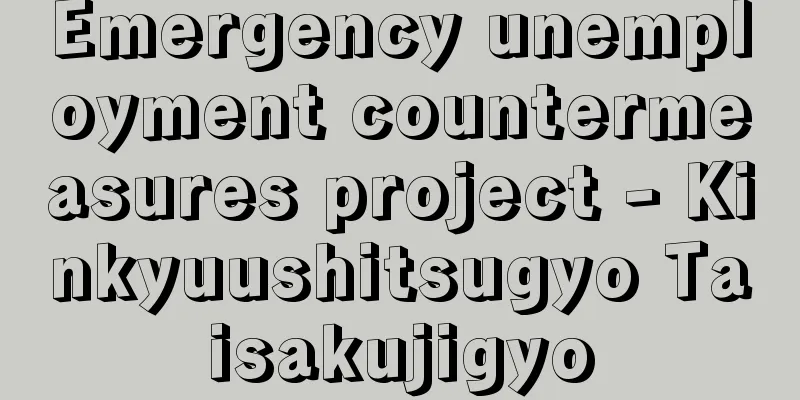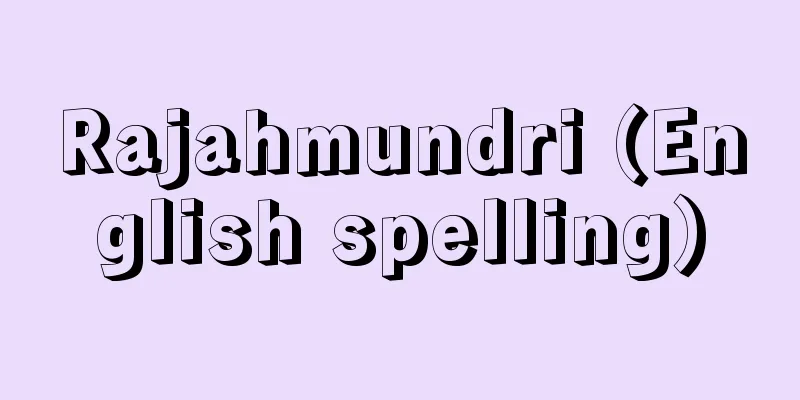Nauru (English spelling) Republic of Nauru
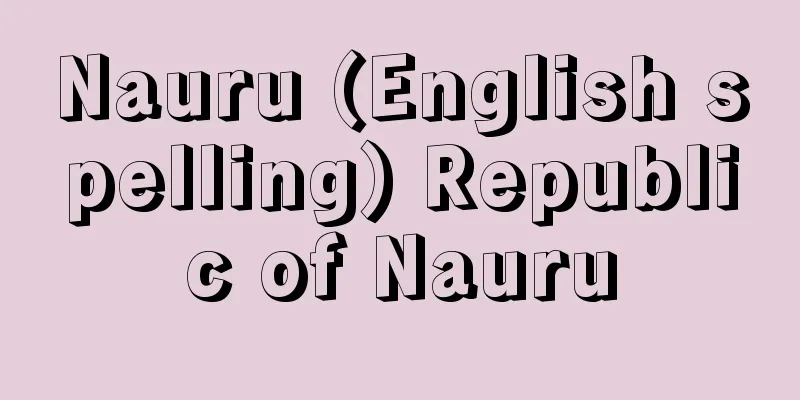
|
An island nation located about 40 km south of the equator. Official name is the Republic of Nauru. It gained independence on January 31, 1968 from a trust territory administered by Australia, New Zealand, and the United Kingdom. Its population is 10,084 (2011 census). Its only land area is an island slightly smaller than Niijima in Tokyo, with an area of 21 square kilometers. It is the third smallest independent country in the world after the Vatican and Monaco. It was once one of the world's wealthiest nations, thanks to revenues from phosphate ore, but since the 21st century, when resources began to run dry, its economy collapsed and the country has been struggling. [Izumi Kobayashi] Nature and GeographyWhile all Pacific island nations are made up of multiple islands, Nauru's entire territory is a single bean-shaped, elevated coral island with a circumference of 19 kilometers. There are no coral reefs around the island, and the sea suddenly opens into the deep sea, which is unusual for this region. As a result, despite being an island people, they have not developed a fishing culture, such as the production of fish and shellfish within the reef. The periphery of the island is flat, and the center is a plateau about 60 meters above sea level. This plateau is made of phosphate rock, which has been fossilized over a long period of time, measured in tens of thousands of years, as seabird droppings and carcasses have accumulated, and the existence of this resource has played a major role in the fate of the people of Nauru since modern times. The island has a tropical maritime climate with an average annual rainfall of about 2,000 mm, but this varies from year to year, and as there are no water sources on the island, it is often hit by drought. Although no detailed archaeological or linguistic research has been conducted, based on ethnic and linguistic characteristics it is believed that the inhabitants belong to Micronesia and that they migrated by canoe from the west around 2000 BC. [Izumi Kobayashi] historyNauru is said to have been "discovered" by the British whaling ship Hunter in 1798. In 1888, Germany established a protectorate on the island, focusing on copra (dried endosperm of the coconut palm). In 1899, British man Albert Fuller Ellis (1869-1951) discovered that Nauru's soil contained extremely pure phosphate rock, and in 1907, he paid a royalty to the German company Jarut, which held the mining rights, and began mining there. The miners were not locals, but Chinese brought by the British. In 1920, after Germany lost its colonial territory in World War I, Nauru became a mandated territory of the League of Nations, with Australia, New Zealand, and the United Kingdom as the administering countries, but in 1942, the Japanese army occupied the island in search of military bases and phosphate rock. Following Japan's defeat in the Pacific War, the country was placed under the trusteeship of the United Nations (UN) in 1947, administered by Australia, New Zealand, and the United Kingdom, and gained independence on January 31, 1968. After independence, the government nationalized the phosphate rock business, and with the enormous income it generated, implemented policies such as tax-free living for citizens, free medical care and education, and even free housing for married adult males. As a result, the country was known as one of the wealthiest countries in the world from the 1970s to the 1980s. Meanwhile, as the phosphate rock resource was expected to run out at the end of the 20th century, the country actively invested its surplus funds in businesses to prepare for the future. These were the operation of a national aviation and shipping company, and ownership of overseas real estate and stocks. However, due to the absence of entrepreneurs, mismanagement, and the leaders' illegal accumulation of wealth, all of the investment businesses failed, and all of the overseas assets were lost. In the 21st century, as the phosphate rock ran out, the government's finances collapsed, and the country suddenly fell from a wealthy country to one in need of international aid. [Izumi Kobayashi] PoliticsThe political system is a republic with a president as head of state, but even after independence it remains a member of the British Commonwealth. The parliament is unicameral, with 18 members elected for three-year terms, and the president is selected by mutual vote among the members. The executive branch is a parliamentary cabinet system, with a cabinet made up of four or five ministers appointed by the president from among the members of parliament. Hammer DeRoburt (1922-1992), who had been president for 21 years since independence, was highly trusted by the people and domestic politics were stable. However, the failure of his successive investment projects gradually became apparent, and in 1989 he was replaced by Bernard Dowiyogo (1946-2003), who advocated economic reform. It seemed that the economy would be on the mend, but the reforms did not go as expected, and there were frequent changes of government, leading to political confusion and the economy heading toward collapse. In 2007, Marcus Stephen (1969- ), a national hero and Olympic weightlifter, took office as president, and he maintained his administration, albeit unsteadily. In November 2011, Sprent Arumogo Dabwido took office as president. General elections were held in 2013 and Baron Divavesi Waqa (1959- ) was elected president. Nauru, which was once a donor to neighboring island nations, has become an aid recipient country, and its interest in foreign relations has changed. This was evident in its appeal to the international community in 2005, when it hosted its first donor countries conference. In terms of diplomatic relations, Nauru initially recognized Taiwan as a country, but severed diplomatic ties in July 2002 and established diplomatic relations with China. However, in May 2005, it restored diplomatic relations with Taiwan and severed diplomatic ties with China. In 1999, Nauru became a member state of the United Nations, and currently has a permanent ambassador to the UN. [Izumi Kobayashi] Economy and SocietyThe currency used is the Australian dollar, but in reality there was no economic activity among the people. Nauruans were civil servants or senior officials of the phosphate mining corporation, and the actual miners and merchants were migrant workers from neighboring islands or Chinese. They were dependent on imports for food and even water, and apart from native plants, they did not cultivate any self-sufficient crops, and the only fishing they did was sport fishing as a hobby; there were no fishermen. Still, there were no problems in the 1980s, when the gross national income (GNI) per capita exceeded $20,000 (US dollars), but by the 2000s it had fallen to $3,433 (US dollars, 2009). With no foundation for a self-sufficient economy, the situation is more serious than that of neighboring islands. For the time being, economic recovery will depend on remaining resources, and on carefully re-extracting and exporting phosphate rock, which had previously been extracted in a rough manner. As a result of putting this plan into action, exports, which had fallen to 1 million Australian dollars per year in 2004, recovered to 20 million Australian dollars in 2007. As of 2011, over 50% of the national finances were dependent on aid from Australia and Taiwan, but if things continue as they are, the government can predict the next 20 to 30 years, and it is hoped that the government will develop domestic industries during this period. The people are well educated, but most of them have never actually done productive work, so many difficulties are expected in developing industries in the future. The majority of the people are Christian, and the official languages are English and Nauruan. All school education is conducted in English, and the literacy rate of the people is almost 100%. There is a 10-year compulsory education period between the ages of 6 and 16. Those who wish to go on to higher education will receive an additional two years of education, and then go on to a university, mainly in Australia. [Izumi Kobayashi] Relations with JapanDuring the Japanese occupation of Nauru during the Pacific War, the Japanese military forced 1,200 Nauruans to evacuate to the Truk Islands (now Chuuk Islands) due to war preparations and food shortages. Many died of hunger and disease there, and only 737 were able to return to Nauru after the war. Among them was the first president, De Robert. Despite this unfortunate history, he became pro-Japan through his interactions with the Japanese people he had evacuated to, and visited Japan frequently after independence. He had a consulate in Tokyo from 1971 (Showa 46) to 1989 (Heisei 1). The national airline Nauru Airlines also operated flights to Kagoshima. Relations between Japan and Fiji have gradually weakened since the political turmoil and financial crisis that followed the fall of De Robert. However, Nauru, which had suffered an economic collapse, became a recipient of Japanese aid, and by fiscal 2013, a total of 2.106 billion yen in grant aid and technical cooperation had been provided. The Japanese ambassador to Fiji also serves as the ambassador to Nauru. [Izumi Kobayashi] "The Collapse of Utopia: The Republic of Nauru" by Luc Foriet, translated by Masahiro Hayashi (Shinsensha, 2011) [References] | | | | [Supplementary Materials] |"> Nauru flag ©Shogakukan Illustration/Shogakukan Creative "> Nauru location map Source: Shogakukan Encyclopedia Nipponica About Encyclopedia Nipponica Information | Legend |
|
赤道の南約40キロメートルに位置する島国。正称ナウル共和国Republic of Nauru。1968年1月31日にオーストラリア、ニュージーランド、イギリスの施政下にあった信託統治領から独立。人口は1万0084(2011国勢調査)。東京都の新島(にいじま)より一回り小さい島が唯一の国土で、その面積は21平方キロメートル。バチカン、モナコに次ぐ世界で三番目の小独立国である。かつては燐(りん)鉱石収入で世界有数の富裕国家であったが、21世紀に入って資源が枯渇してからは一気に経済が破綻(はたん)し、苦しい国家運営が続いている。 [小林 泉] 自然・地誌太平洋の島嶼(とうしょ)国家はいずれも複数島からなるが、ナウルは周囲19キロメートルのソラマメ状の隆起サンゴ礁島一つが全領土である。また、島の周囲にはサンゴ礁の形成がみられず、この地域では珍しく海がいきなり深海に通じている。そのため島嶼民でありながら、リーフ(岩礁)内での魚貝類の生産活動といった漁労文化の発展はみられなかった。島の周辺部は平坦地で、中央部は海抜60メートルほどの台地である。この高台は、海鳥の糞(ふん)や死骸(しがい)が堆積し数万年単位の長期間を経て化石化した燐鉱石でなっており、この資源の存在が近代以降のナウルの人々の運命を翻弄(ほんろう)してきた。 熱帯海洋性気候で平均の年間降水量は2000ミリメートルほどであるが、毎年一定ではなく、島内に水源がないために干魃(かんばつ)にみまわれることも少なくない。 考古学や言語学の詳細研究はなされていないが、民族的、言語的特徴から住民はミクロネシアに属しており、紀元前2000年ごろに西方からカヌーで移動してきたと推定されている。 [小林 泉] 歴史1798年、イギリスの捕鯨船ハンター号がナウル島を「発見」したとされる。1888年にはドイツが保護領化し、コプラ(ココヤシ果実の胚乳を乾燥させたもの)生産に力を注いだ。1899年にイギリス人アルバート・エリスAlbert Fuller Ellis(1869―1951)が、ナウルの土壌がきわめて純度の高い燐鉱石であることを発見し、1907年から採掘権をもつドイツのヤルート会社に権利金を支払って、採掘を開始した。鉱山の採掘労働者は現地人ではなく、イギリス人が連れてきた中国人であった。第一次世界大戦でドイツが植民地領土を失った後の1920年、オーストラリア、ニュージーランド、イギリスの3国を施政国とする国際連盟の委任統治領となったが、日本軍が1942年に軍事拠点と燐鉱石を求めて占領。太平洋戦争での日本の敗戦により、1947年にはオーストラリア、ニュージーランド、イギリスの3国を施政国とする国連(国際連合)信託統治下に置かれ、1968年1月31日に独立した。 独立後に燐鉱石事業を国営化した政府は、莫大(ばくだい)な収入をもとに国民の無税化、医療・教育費の無料化、さらには結婚した成人男子に無償で住宅を提供するなどの政策を実施。これにより1970年から1980年代にかけては世界でも有数な富裕国として知られた。一方、20世紀末には燐鉱石の資源枯渇が予想されていたため、余剰資金を積極的に事業に投資して将来に備えた。それは国営の航空・海運会社の運営であり、海外不動産や株式の保有であった。しかし、事業家の不在、乱脈経営、指導者の不正蓄財等々の理由で投資事業はことごとく失敗し、海外資産のすべてを消失した。21世紀に入り、燐鉱石の枯渇とともに政府財政が破綻し、これまでの富裕国から一気に国際的援助の必要な国へと転落してしまった。 [小林 泉] 政治政体は大統領を国家元首とする共和制であるが、独立後もイギリス連邦に所属している。議会は一院制で3年任期の議員数18で構成され、議員の互選により大統領を決める。行政は議院内閣制で、大統領が議員のなかから指名する4、5名の大臣により組閣される。 独立以来21年間、大統領に就いていたハマー・デ・ロバートHammer DeRoburt(1922―1992)は、国民の信頼も厚く国内政治は安定していた。しかし、相次ぐ投資事業の失敗がしだいに明らかとなり、1989年に経済改革を掲げたバーナード・ドイヨゴBernard Dowiyogo(1946―2003)に大統領の座を奪われた。これで経済の健全化が進むかにみえたが改革は思うに任せず、その後はめまぐるしい政権交代が続いて政治は混迷、経済は破綻の道を突き進んだ。2007年、重量挙げオリンピック選手として国民的英雄であったマーカス・スティーブンMarcus Stephen(1969― )が大統領に就任後は、不安定ながらも政権を維持してきた。2011年11月にスプレント・アルモゴ・ダブウィドSprent Arumogo Dabwidoが大統領に就任した。2013年には総選挙が行われ、バロン・ディバベシ・ワンガBaron Divavesi Waqa(1959― )が大統領に選出された。 かつて近隣島嶼諸国に援助する側であったナウルが被援助国となって、対外関係への関心は変化した。2005年には、初めてドナー国会合を招致して国際社会へアピールしたのもその表れである。外交関係においては、当初台湾を国家承認していたが、2002年7月に断交して中国と国交を樹立。しかし、2005年5月にはふたたび台湾との外交関係を復活させて中国と断交した。1999年に国連加盟国となり、常駐の国連大使を送っている。 [小林 泉] 経済・社会使用通貨はオーストラリア・ドルであるが、実際のところ国民の経済活動は存在しなかった。ナウル人といえば公務員か燐鉱石公社の幹部職員であり、実際に働く鉱山労働者や商業の担い手は近隣島嶼からの出稼ぎ者か中国人であった。食料品はもちろん水までも輸入に依存しており、自生する植物以外に自給的作物の栽培はなく、漁獲も趣味としてのスポーツフィッシングがあるだけで、漁民などはいなかった。それでも1人当り国民総所得(GNI)が2万ドル(アメリカ・ドル)を超えていた1980年代は問題なかったが、2000年代には3433ドル(アメリカ・ドル、2009)まで落ち込み、自給経済の基盤がないだけに、近隣島嶼と比べて事態は深刻である。 経済立て直しは当面残存資源に依存し、これまで粗放採掘であった燐鉱石を緻密(ちみつ)に再掘して輸出することにかかっていた。この計画を実行に移した結果、2004年には年間100万オーストラリア・ドルまで落ち込んでいた輸出額を2007年には2000万オーストラリア・ドルまで回復させた。2011年時点で国家財政の50%超がオーストラリアや台湾からの援助に頼っているものの、このまま順調に推移すれば、今後20年から30年は見通しが立てられる計算で、政府はこの間に国内産業の育成を実現したいと考えている。国民の教育レベルは高いが、実際に生産労働をしたことのない人々ばかりで、今後の産業育成には多くの困難が予想される。国民の大半がキリスト教徒で、公用語は英語とナウル語である。 学校教育はすべて英語を使用し、国民の識字率はほぼ100%。6~16歳の間に10年間の義務教育期間が設けられている。高等教育進学希望者はさらに2年間の追加教育を受けた後に、主としてオーストラリアの大学に進学する。 [小林 泉] 日本との関係太平洋戦争中の日本軍による占領時、日本軍は戦闘準備と食糧不足のために1200名のナウル人をトラック諸島(現、チューク諸島)に強制疎開させた。そこでは飢えと病気のため多くの死者が出て、終戦後ナウルに帰島できたのは737人であった。そのなかに初代大統領のデ・ロバートがいた。このような不幸な歴史にもかかわらず、彼は疎開中の日本人との交流から親日となり、独立後には頻繁に来日した。1971年(昭和46)から1989年(平成1)まで、東京に領事館を設置。国営ナウル航空も鹿児島に就航していた。 デ・ロバート失脚後の政治混乱と財政危機が起きてから、対日関係はしだいに希薄になっていった。しかし、経済破綻したナウルは日本の援助対象国となり、2013年度(平成25)までの累積で21.06億円の無償資金協力・技術協力が実施された。駐フィジーの日本大使がナウルも兼任している。 [小林 泉] 『リュック・フォリエ著、林昌宏訳『ユートピアの崩壊 ナウル共和国』(2011・新泉社)』 [参照項目] | | | | [補完資料] |"> ナウルの国旗 ©Shogakukan 作図/小学館クリエイティブ"> ナウル位置図 出典 小学館 日本大百科全書(ニッポニカ)日本大百科全書(ニッポニカ)について 情報 | 凡例 |
>>: Naumburg - Naumburg (English spelling)
Recommend
American Coal Miners Union - American Coal Miners Union
The Wagner Act, enacted in 1935, was extremely fa...
Karakami - Karakami
A god who appears in the Kojiki and the Engishiki ...
masurium
…It is named after the Greek word technētos, whic...
Abbado, C.
...The orchestra is managed independently by its ...
römerite (English spelling) romerite
… [Ferrous sulfate (III) Iron (II)] Its chemical ...
loosestrife
...It grows in northern marshes. The genus Lysima...
Mosquito repellent - Kakusube
…This method is used in many places, and in Japan...
Gray, S. (Physicist)
…The first discovery in the 18th century was the ...
Lacebark pine
...Long pine (P. lambertiana Dougl.) (English nam...
Impressionistic criticism
Criticism evaluates artworks based on the impress...
Wild goose spot
〘Noun〙 A string of wild geese flying one after the...
Ichikawa Sadanji
Kabuki actor. Takashimaya family name. Currently ...
ISU - Implementation Support Unit
The ISU was established on August 20, 2007 by the ...
Mount Wakakusa
A mountain in the eastern part of Nara City. It i...
beggar's-tick (English)
...The bracts are arranged in two rows, one insid...

